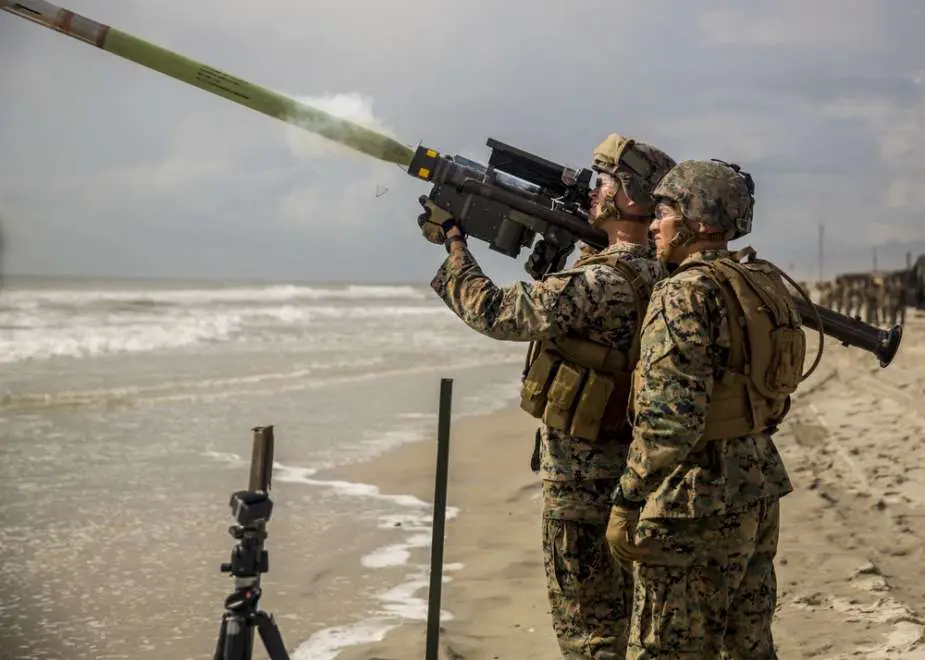Breaking news
US Army refurbishes thousands of old Stinger air defense missiles.
On January 23, 2024, the U.S. Army declared the successful completion of a substantial project to refurbish and modernize nearly 1,900 Stinger FIM-92 man-portable air defense missile systems, which were once considered unserviceable. This effort reinstated them into the military inventory. As a component of the Stinger Service Life Extension Program (SLEP), this initiative led to considerable cost savings, with an estimated $50,000 saved per missile in comparison to the expense of acquiring new equipment.
Follow Army Recognition on Google News at this link

U.S. Army to refurbish and modernize nearly 1,900 Stinger FIM-92 man-portable air defense missile systems (Picture source: US DoD)
Launched in 2017 at the McAlester Army Ammunition Plant (MCAAP), the SLEP became more urgent following Russia's invasion of Ukraine in February 2022. In an increasingly unstable security environment, the program focused on assessing and renovating some 2,700 aging Stinger missiles to enhance the active inventory. The program aims to extend the service life of 1,426 missiles for the Army and 1,168 for the Marine Corps by an additional 10 years. Indeed, since 2023, the original Stinger's reprogrammable microprocessor has become obsolete. To address this issue, a service life extension program was established to keep the Block I model in service until 2030.
The result? Approximately 70% of the previously unusable missiles were put back into service, exceeding the initial estimate of 1,100 missiles. Moreover, the work was completed four months ahead of the planned 16-month schedule. This success is largely attributed to MCAAP's experience with the SLEP program.
The modernization process involved extensive testing, disassembling the missiles, replacing critical aging components, and integrating new technologies. These improvements have made them more effective against modern threats such as Unmanned Aerial Systems (UAS), for which the Stingers were not originally designed. The work undertaken as part of this program includes replacing selected components in existing Block 1 missiles, namely new rocket motors, warheads, gas generators, and desiccant cartridges. These modifications extend the munitions' service life and increase their reliability.
Furthermore, the U.S. Army plans to increase Stinger missile production to 60 per month by 2025, a 50% increase from the current rate. This decision follows a growing demand for these missiles, especially after the U.S. government provided about 1,500 Stingers to Ukraine to counter the Russian invasion. A PEO MS spokesperson highlighted Stinger's effectiveness in supporting Ukraine.
To support this increased production, the Stinger program is redesigning the Dual Detector Assembly (DDA), a crucial component of the missile's guidance system. The new DDA, which will undergo a series of qualification tests, will have the same attributes as the old DDA but will be adapted to meet new production requirements. The first deliveries of Stinger missiles equipped with the new DDA are expected in 2026.
Raytheon Technologies, which produces Stinger missiles in Tucson, Arizona, received a $624.6 million contract in May 2022 to provide 1,300 Stinger MANPADS to replenish the U.S. inventory, likely replacing stocks sent to Ukraine.
Greg Hayes, CEO of Raytheon, said on April 26: "Some of the components are no longer commercially available, so we're going to have to redesign some of the electronics in the missile seeker head. That’s going to take us a little bit of time." This new contract, according to the report, has no established timeline.
The old DDA will continue to be used in production until stocks are exhausted, expected by 2026, when deliveries of Stingers with the new component are expected to begin.
Finally, in November 2020, the U.S. Army issued a request for information for a new MANPADS to replace the Stinger. The new system will be compatible with the Stinger Vehicle Universal Launcher used on the IM-SHORAD and capable of defeating fixed and rotary-wing aircraft, as well as Group 2 and 3 UAS as well as or better than the Stinger. A contract for up to 8,000 missiles is planned to be awarded by 2026. The request for information to interested firms only went out in April 2022, and RTX and Lockheed Martin were selected to competitively develop the Stinger replacement in September 2023.



























